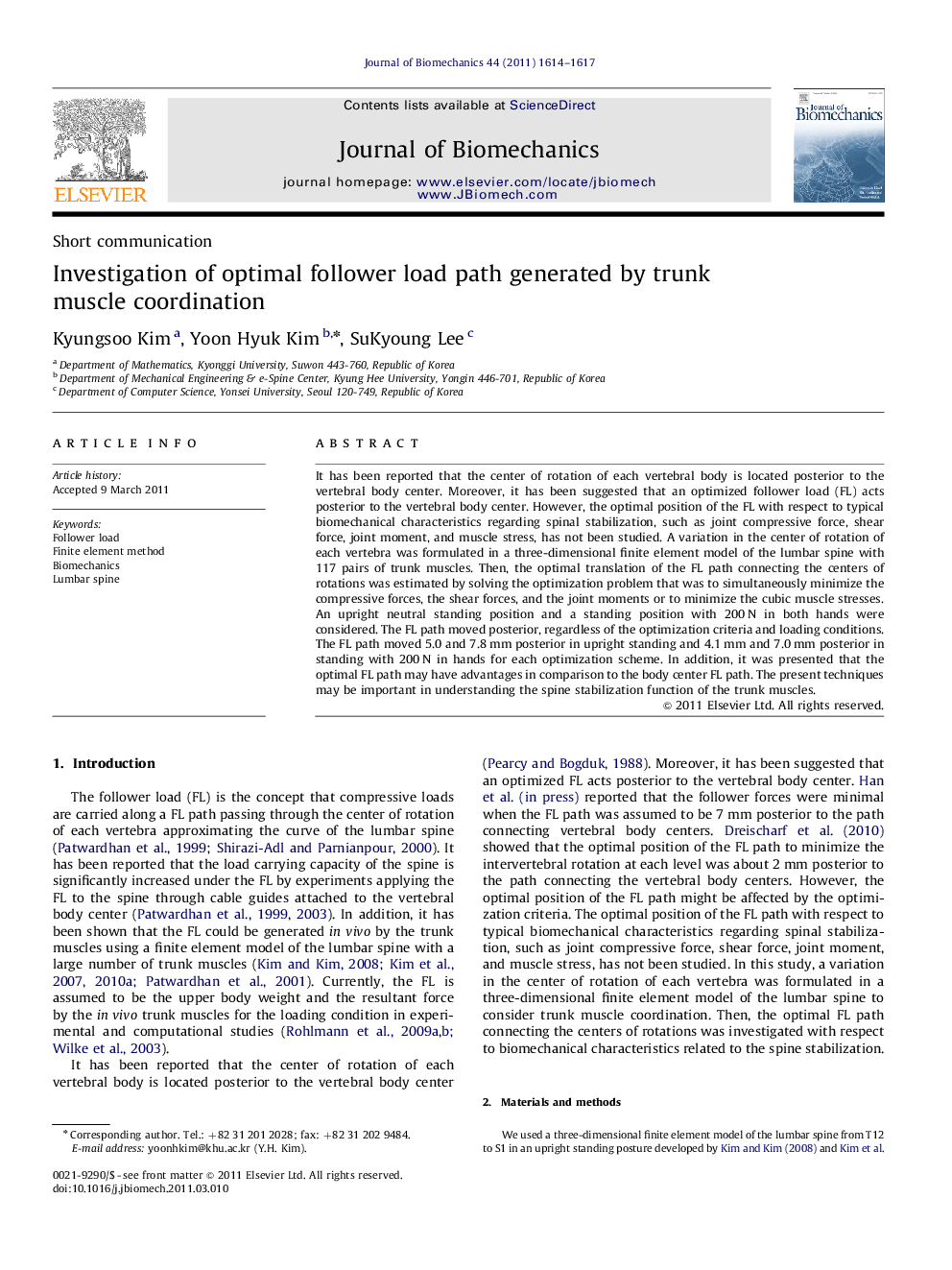| Article ID | Journal | Published Year | Pages | File Type |
|---|---|---|---|---|
| 10433442 | Journal of Biomechanics | 2011 | 4 Pages |
Abstract
It has been reported that the center of rotation of each vertebral body is located posterior to the vertebral body center. Moreover, it has been suggested that an optimized follower load (FL) acts posterior to the vertebral body center. However, the optimal position of the FL with respect to typical biomechanical characteristics regarding spinal stabilization, such as joint compressive force, shear force, joint moment, and muscle stress, has not been studied. A variation in the center of rotation of each vertebra was formulated in a three-dimensional finite element model of the lumbar spine with 117 pairs of trunk muscles. Then, the optimal translation of the FL path connecting the centers of rotations was estimated by solving the optimization problem that was to simultaneously minimize the compressive forces, the shear forces, and the joint moments or to minimize the cubic muscle stresses. An upright neutral standing position and a standing position with 200Â N in both hands were considered. The FL path moved posterior, regardless of the optimization criteria and loading conditions. The FL path moved 5.0 and 7.8Â mm posterior in upright standing and 4.1Â mm and 7.0Â mm posterior in standing with 200Â N in hands for each optimization scheme. In addition, it was presented that the optimal FL path may have advantages in comparison to the body center FL path. The present techniques may be important in understanding the spine stabilization function of the trunk muscles.
Related Topics
Physical Sciences and Engineering
Engineering
Biomedical Engineering
Authors
Kyungsoo Kim, Yoon Hyuk Kim, SuKyoung Lee,
